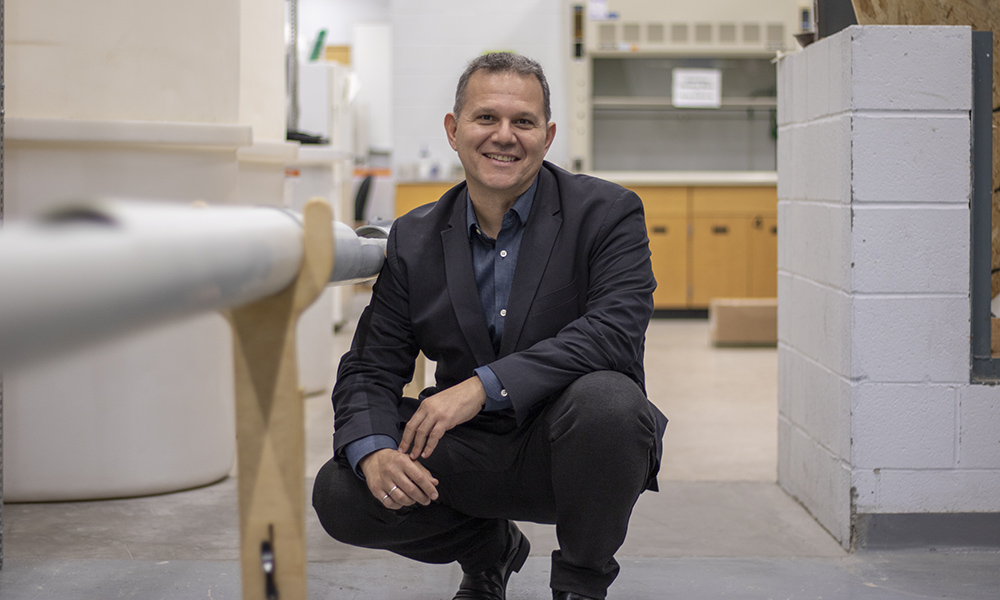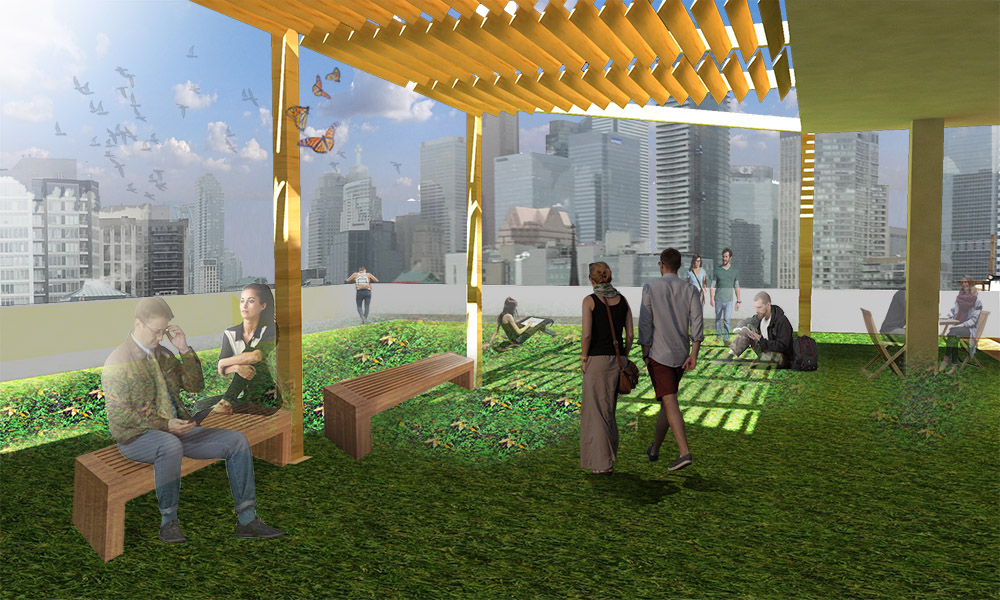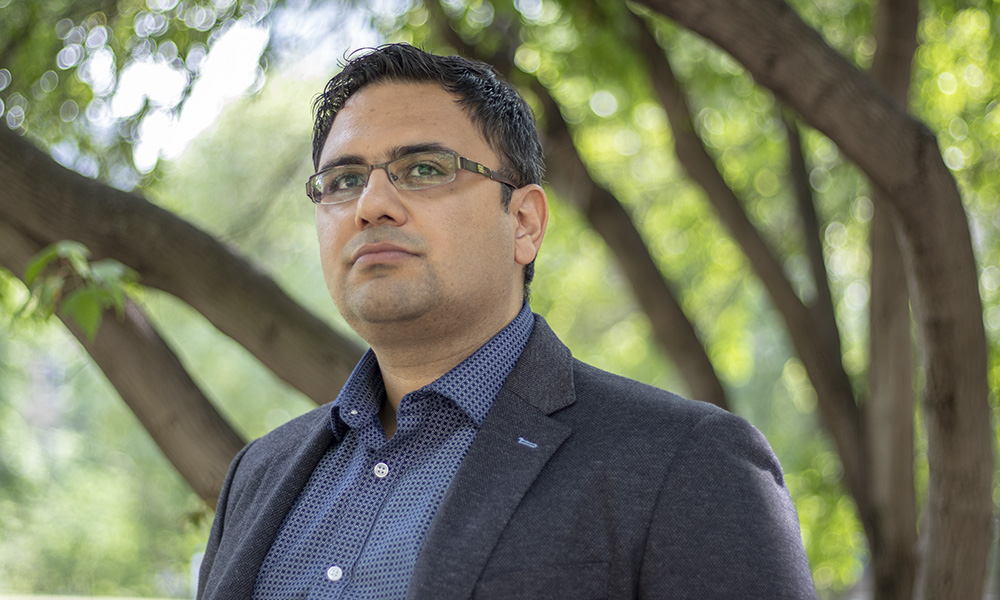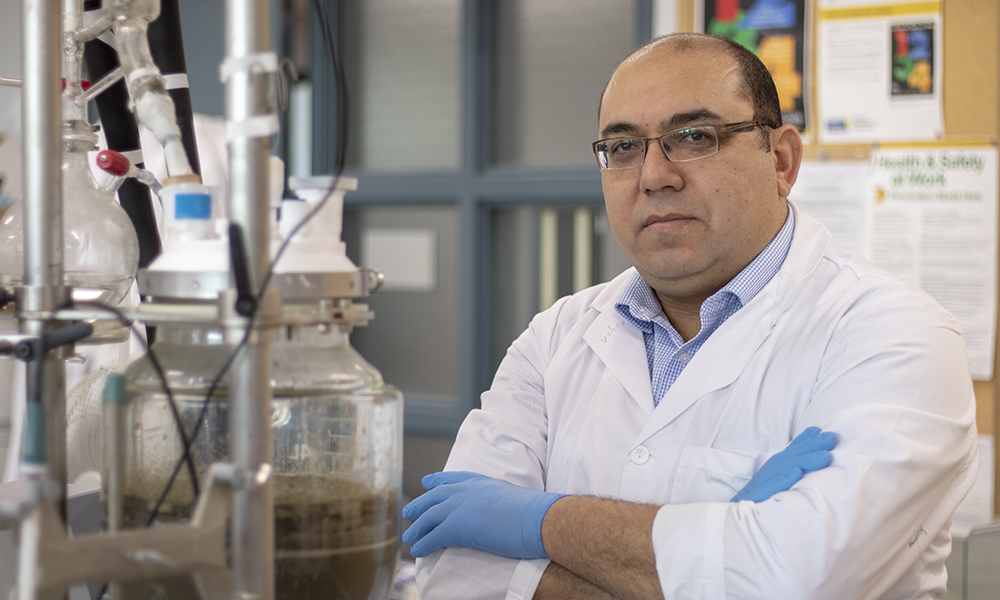World Water Week: solving global clean water issues
World Water Week is an international event that aims to raise awareness about global water challenges and to showcase efforts to solve them. Increased and new contaminants, population trends and rising water levels are all threatening to impact the world’s limited supply of fresh water. In the Faculty of Engineering and Architectural Science, students and faculty are working to improve water quality in Toronto and around the world.

Mehrab Mehrvar is helping protect the world’s limited supply of fresh water by predicting the ways in which it might come under threat. The professor of chemical engineering collects and analyzes data from Colombian aquifers to help protect them from pollution. Colombia relies on underground aquifers as the country’s main domestic source of drinking water, but as climate change raises sea levels and floods become more common, harmful salt is introduced to the once protected aquifers. Mehrvar said that, before solutions can be proposed, experts must be able to predict how severe the problem is currently and could become in the future. “When we develop this tool, we can use it for future problems and other regions to model and predict how aquifers will be impacted.”
Mehrvar also researches wastewater systems and is using advanced oxidation technology to tackle emerging contaminants – such as plastics and pharmaceuticals – that modern systems can’t handle. Mehrvar said that, while technology like the systems he researches can help, the only sustainable solution for the world’s water quality and quantity issues is to protect the environment. “In my opinion, every human being equally has the right to access to clean water. At the same time, every human being has an obligation to help protect it.”

Research into the products that are flushed down our toilets is helping to solve the problem of sewer system blockages and water contamination. Darko Joksimovic, professor of civil engineering, and a team of graduate students worked with Ryerson Urban Water to test products that are marketed as safe to flush down toilets. “If you look at toilet paper, it quickly breaks down and can be treated at the water treatment plant. The problem with wipes and other consumer products that don’t disperse is that they can cause a blockage,” said Joksimovic.
The work being done will advance a long fight to get governments to regulate what products can be labelled as “flushable.” With fewer non-dispersible materials going down the drain, flooding, pipe damage and water pollution can be avoided. Graduate student Barry Orr says that when there is a backup in the pipes, the water looks for the path of least resistance, often resulting in raw sewage and other chemicals rushing into freshwater sources. One contaminant found in so-called “flushable” products was plastic, which can break down and enter our drinking water. Orr has been working in the water industry for many years but returned to school in order to contribute to the research happening at Ryerson. “Studying at Ryerson has given me an opportunity to help create data around this issue and hopefully move it along to the government level.”

Climate change, increasing population density and inadequate infrastructure are just some of the reasons that (PDF file) flooding is on the rise (external link) in Canadian cities. Floods not only endanger lives and damage property but also contaminate freshwater sources as they carry raw sewage, debris and chemicals into our drinking water reservoirs. To help tackle Toronto’s flooding problem, the city has introduced a by-law mandating green roofs for new highrise buildings.
Ryerson architectural science students are going one step further by designing green roofs that can be retrofitted to existing buildings. Catherine Lee, Architectural Science ’19, participated in a fourth-year building science project with the goal of developing a multi-purpose green space for a residential building near Ryerson. Green roofs are helping urban cities augment sewage systems that are incapable of handling rainfall and human waste. “Because there are so many paved surfaces, when it rains, too much water runs out from these buildings and enters into the sewer system, which results in flooding,” said Lee. “Green space holds the water back and slowly releases it into the sewer system, reducing the strain.” She said that, as buildings age, it’s important to renovate them to become more efficient and environmentally friendly.

Nariman Yousefi is tackling new and emerging water contaminants with an innovative filter. Yousefi, a professor in the Department of Chemical Engineering, created a water filter using layered sheets of graphene, a carbon that’s only one atom thick. Most at-home water filters on the market only improve smell and taste, and even filters at treatment plants are struggling to tackle new contaminants like pharmaceuticals and microplastics. “The challenges of water treatment around the world is that you have a mixture of different contaminants,” said Yousefi. The project started with the goal of putting “a water treatment plant on your counter,” but while at Ryerson, Yousefi is working to scale up his invention so that it can be used to help improve current water treatment systems and offer solutions in places where there is no water treatment infrastructure. “Canada can be a leader in access to clean water as we develop technologies that can help countries and communities. I think that Ryerson, as a major research university, should have a share of that research and development.”

Elsayed Elbeshbishy, professor of civil engineering, studies how the waste removed from drinking water can be repurposed and used to improve the quality of freshwater sources. Treatment plants spend huge sums of money on transporting water waste and storing it in landfills. Elbeshbishy said that, beyond being inefficient, this system poses the risk of reintroducing those contaminants into the water system through runoff or seepage into groundwater. He is working on a system that takes the extracted waste and turns it into multiple byproducts, including chemicals that can be used for water treatment, carbon and bioplastics. One modern challenge in water treatment is dealing with microplastics that traditional filter and sanitization processes can’t eliminate. Elbeshbishy said that bioplastics are designed to easily break down in water and can be filtered out by existing infrastructure before reaching the kitchen tap. There is currently a pilot project out of London, Ont., where the process can be refined and prepared for large-scale adoption.